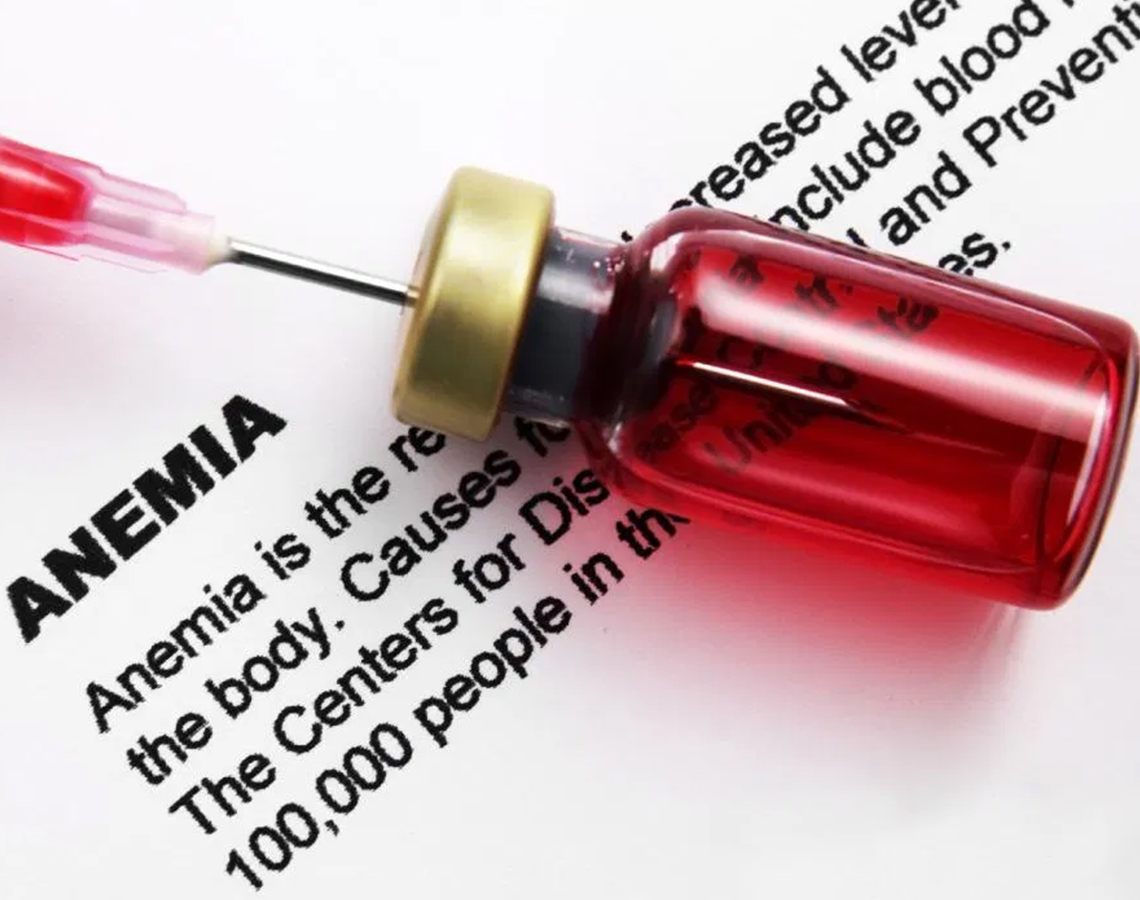IRON DEFICIENCY ANEMIA

IRON DEFICIENCY ANEMIA
30 Oct, 2023
What is Anemia?
Anemia is a condition in which the blood doesn’t have enough healthy red blood cells or number of red blood cells (RBC), and accordingly their oxygen carrying capacity,is inadequate to meet the body’s physiological needs.The function of RBCs is to deliver oxygen from the lungs to the tissues and carbon dioxide from the tissues to the lungs.This is accomplished by using hemoglobin (Hb), a tetramer protein composed heam and globin.Anemia impairs the body’s ability of gas exchange by decreasing the number of RBCs transporting oxygen and carbon dioxide.Anemia results from one or more of the following processes:defective red cell production,increased red cell destruction or blood loss.Iron is necessary for synthesis of hemoglobin.Iron deficiency is thought to be the most common cause of anemia globally,but other nutritional deficiencies(including folate,Vitamin B12 and Vitamin A),acute and chronic inflammation,parasitic infection,and inherited disorders that affect Hb synthesis,red blood cell production or red blood cell survival can all cause anemia.Iron deficiency anemia results in impaired cognitive and motor development in children and decreased work capacity in adults.
The effects are most severe in infancy and early childhood.In pregnancy,iron deficiency anemia can lead to perinatal loss,prematurity and low birth weight (LBW) babies.Iron deficiency anemia also adversely affects the body’s immune response.
Etiology of Anemia
The most commonest causes of anemia in developing countries,particularly among the most vulnerable groups (pregnant women and preschool age children), are nutritional disorders and infections.Hence the causes of anemia could be segregated as nutritional and non-nutritional,underscoring the etiological importance of dietary deficiency as the major causative factor.
Iron deficiency
Iron status can be considered as a continum from iron deficiency with anemia,to iron deficiency with no anemia,to normal iron status with varying amounts of stored iron,and finally to iron overload,which can cause organ damage when severe.Iron deficiency is the result of long term negative iron balance.Iron deficiency anemia (IDA) should be regarded as a subset of iron deficiency ,that is,it represents the extreme lower end of the distribution of iron deficiency.
Impact of Anemia on Health Outcomes
Anemia has major consequences on human health as well as social and economic development. Anemia is the world’s second leading cause of disability and is responsible for about I million deaths a year,of which three quarters occur in Africa and South-East Asia.
In young children,iron deficiency is due to increased iron requirement during periods of rapid Growth,which are almost 10 times higher per kilogram of body weight than that of an adult male.In addition,infants and toddler diets are often poor in bio-available iron.
Prevention and Treatment
Anemia is a multi-factoral disorder that requires a multi-pronged approach for its prevention and treatment.Prevention of both iron deficiency and anemia require approaches that address all the potential causasive factors.Intervention to prevent and correct iron deficiency and IDA,therefore, must include measures to increase iron intake through food-based approaches, namely dietary diversification and food fortification with iron; iron supplementation and improved health services and sanitation.
Diet Diversification,Food Fortification and Supplementation
Dietry diversification is encouraging the consumption of micronutrients rich food-dark green leafy egetables,lentils and vitamin C rich fruits.
Food fortification is the addition of key vitamin and minerals(e.g.iron,folic acid iodine,vitamin A and zinc)to staple foods to improve their nutritional content and address a nutritional gap in population.
Food supplements are highly concentrated vitamins and minerals produced by pharmaceutical manufactures in the form of capsules,tablets or injections and administrated as part of health care or specific nutritions campaigns.
